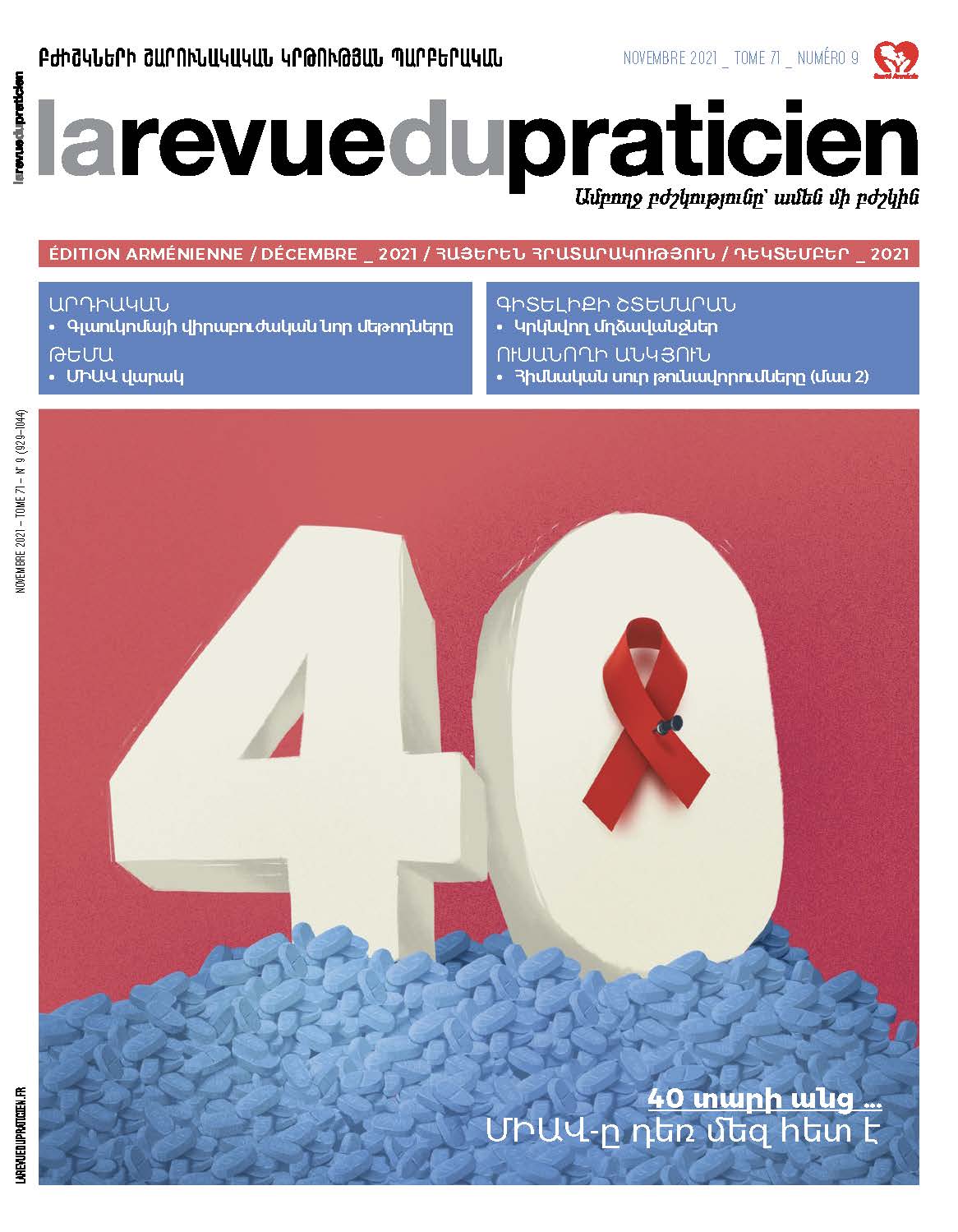Ինչ անել կրկնվող մղձավանջների դեպքում 52
Agnès Brion.Ամփոփագիր
Մղձավանջը հաճախադեպ պարասոմնիա է, որն ի հայտ է գալիս առավելապես արագ քնի փուլում և բնորոշ է բոլոր տարիքային խմբերին: Կրկնվող մղձավանջները, որոնք նաև կոչվում են «մղձավանջների հիվանդություն», համարվում են կլինիկական միավոր և զգալի տառապանքների աղբյուր: Դիսֆորիկ երազների կամ երազների դրվագների տեսքով ի հայտ եկող պարասոմնիաները հարկավոր է տարբերել մղձավանջներից, տարբերվում է նաև բուժումը: Դրանք հիմնականում գիշերային վախեր են, քնի հետ կապված զգայապատրանքներ և վարքի խանգարում արագ քնի ընթացքում: Մղձավանջները կարող են լինել իդիոպաթիկ կամ այլ հիվանդության ուղեկցող, սովորաբար հանդիպում են սթրեսի կամ տրավմայի համատեքստում, նաև տագնապի բարձր մակարդակ ունեցող մարդկանց շրջանում: Կլինիկական գնահատումը նախ որոնում է հոգեկան խանգարումներ, սակայն նաև մղձավանջների ի հայտ գալուն նպաստող՝ քնի այլ խանգարում (նարկոլեպսիա, քնի օբստրուկտիվ ապնոեի համախտանիշ), որն ունի բուժածին կամ թունավոր ծագում: Հազվադեպ պատասխանատու է գիշերային էպիլեպսիան: Կրկնվող մղձավանջներն առաջին հերթին բուժվում են հոգեթերապիայի կիրառմամբ: Ներկայումս խորհուրդ է տրվում մտապատկերումների կրկնության (ՄՊԿ) մեթոդը, որն արդյունավետ է և՛ իդիոպաթիկ, և՛ հետտրավմատիկ սթրեսային խանգարումների հետ կապված մղձավանջների ժամանակ:
